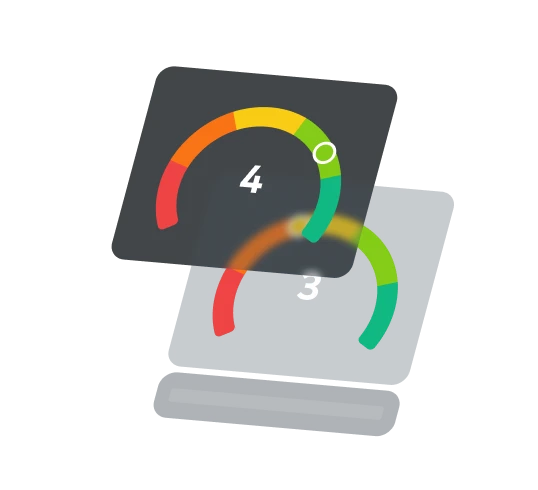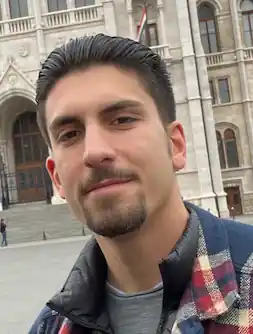
The Differences Between NPS And eNPS: The Productivity Secret


- Understanding The Net Promoter Score (NPS)
- Understanding The Employee Net Promoter Score (eNPS)
- Comparing NPS and eNPS: Key Distinctions
- The Roles of NPS And eNPS In The Business World
- How does the eNPS impact the NPS?
- Conclusion
In a competitive and industrial world, organizations are bound to figure out new and creative approaches to increase their productivity and resilience.
With that in mind, different organizational surveys have been designed to measure a company's success rate in various fields.
These surveys help organizations look deep inside and take action for improvement.
We are here to discuss the NPS and the eNPS, two organizational surveys with similar names but different purposes.
The Net Promoter Score (NPS) and The Employee Net Promoter Score (eNPS) are metrics crafted to assess the satisfaction and loyalty levels of customers or employees of a company.
Both surveys attempt to quantify how pleased the users feel. However, there are differences in these surveys despite how the names suggest.
What are the differences between NPS and eNPS? Can we draw a line between the two surveys for an optimum outlook? Let’s find out.
Our Employee Survey Systems allow you to have specifically designed eNPS surveys to serve your company’s needs.
Understanding The Net Promoter Score (NPS)
NPS, or the net promoter score, is a widely used tool in business to measure customer loyalty and satisfaction.
Fred Reichheld first invented NPS at Bain & Company in the early 1990s. Reichheld explained that old methods were too time-consuming and inconclusive.
He concluded that a company’s customer satisfaction can be measured by a simple question: “On a scale of 0 to 10, how likely are you to recommend our company/product/service to others?”
There could be follow-up questions to the main one for further assessment.
Customers are divided into three categories based on their responses:
- Promoters who answered 9 or 10: They serve as an advertising asset for your products/services.
- Passives who answered 7 or 8: They are generally satisfied or neutral.
- Detractors who answered from 0 to 6: They are not pleased with your products/services.
The score of an NPS survey is calculated by subtracting the percentage of detractors from the percentage of promoters.
The score range of this survey is from -100 (mostly detractors) to +100 (mostly promoters). Note that the higher your NPS score is, the more loyal and satisfied your customers are.

Understanding The Employee Net Promoter Score (eNPS)
eNPS is derived from the NPS system, which concentrates on the employee experience instead of the customer experience.
The eNPS came as a creative notion to present the company as a product to the employees (customers) after top organizations' extensive application of NPS.
The eNPS survey has one central question: “On a scale of 0 to 10, how likely are you to recommend our company as a workplace to others?” This question might proceed to some follow-ups for better and more thorough results.
In this case, the responding employees go into three categories (same as the ones in NPS): Promoters (rating 9 or 10), Passives (rating 7 or 8), and Detractors (rating from 0 to 6).
eNPS has become a widely known tool among businesses. We suggest you read our extended article “What is Employee Net Promoter Score?” to better comprehend what it can do for your organization.
eNPS surveys aim to measure a company’s employee loyalty and satisfaction levels. A high level of employee engagement and devotion benefits a company in the long run to achieve maximum productivity.
The score calculation of eNPS surveys follows the NPS calculation formula: Subtracting the percentage of detractors from the percentage of promoters.
Even though the formula and the calculation of the eNPS scores seem straightforward, there are a few tricks to them. You can look at our article “How To Calculate The Employee Net Promoter Score?” to fully understand how your company’s score is calculated or how acceptable your score is.
Comparing NPS and eNPS: Key Distinctions

Both eNPS and NPS help a company gain critical information on its performance. However, their different focus on the internal status on the one hand (eNPS) and the orientation of the external perception on the other hand (NPS) make them individually essential for an organization.
These are some of the main differences between NPS and eNPS:
1. Audience
This factor is the primary difference between NPS and eNPS surveys.
The target audience in NPS surveys are customers who have used the products or services of a company.
On the contrary, eNPS surveys target the employees of an organization to measure their satisfaction and loyalty.
2. Strategy
While NPS and eNPS help a company thrive and reach better productivity, they take different approaches.
NPS surveys assess the quality of services/products a company provides for its customers.
On the other hand, eNPS measures how likely a company’s employees are to recommend their workplace to others.
In other words, NPS plays a quality control role for products, whereas eNPS evaluates an organization's internal affairs.
3. Influence
An organization can enhance the quality of its services or products by leveraging customized NPS surveys.
NPS outcomes demonstrate the satisfaction and loyalty level of your customers. However, eNPS surveys are applied to evaluate your company’s work environment and employee engagement.
By exploiting eNPS surveys, you can address the potential issues in your company and identify areas that need improvement.
4. Anonymity
NPS surveys aim to measure how satisfying a company’s products/services are, so anonymity isn’t a big issue here.
Nobody feels bothered or in trouble if customers give constructive criticism or negative feedback with their real names.
However, the case with the eNPS survey is a bit different. If you don’t ensure your employees about the survey anonymity and job security beforehand, they may withhold their genuine opinions.
We strongly advise that you take every possible action to make your employees feel safe and comfortable about taking the eNPS surveys.
The Roles of NPS And eNPS In The Business World

As an organization grows, more people, whether customers or employees, get involved.
A strong relationship between a company and people relies on factors such as active management, positive work culture, etc.
The NPS and eNPS are metrics that quantify how individuals feel about an organization, but they bring different advantages to the table.
The Importance of NPS
If conducted properly, NPS surveys are essential to evaluate customer loyalty, compare your performance with your rivals, and enhance customer relationships.
The Importance of eNPS
In comparison, a well-customized eNPS survey leads your company toward measuring employee satisfaction, locating your weaker and more vital areas, and increasing your company’s employee retention rate.
How does the eNPS impact the NPS?
Even though eNPS is a derivative of NPS, it’s been suggested that high eNPS results correlate with more customer satisfaction.
In 2020, Gallup researched eNPS in 10 organizations only to find that high employee engagement elevates 11 performance outcomes such as customer loyalty, productivity, profitability, etc.
However, it raises the question: How should we put this relationship into practice for our organization?
🤝 Your Employees Are Customers Too!
Firstly, you should learn how to treat your employees/teammates as customers during the eNPS surveys.
This may sound confusing but think of your company’s workplace as a product for your staff.
The engagement and satisfaction of your employees have an indirect effect on your outcomes.
The standards you apply to your clients are also practical for your staff, including satisfaction, loyalty, risk management, feedback, etc.
📊 Study The Charts of eNPS And NPS.
Companies that apply the eNPS regularly, in addition to NPS surveys, tend to see synchronized growth in both employee and customer satisfaction graphs.
This outcome suggests that organizations prioritizing employee satisfaction have a higher customer loyalty rate.
🦄 Characteristics Of Your Team Members Affect Your Customers.

Diverse employee groups have a better chance of designing well-adjusted products for your clients.
Having a team of different individuals helps you better comprehend issues and potential opportunities to serve better services/products.
Additionally, diverse personnel give different answers to eNPS or other employee surveys, which is an excellent opportunity for development.
💝 Valued Employees Are Equal To Valued Customers.
If your team members feel cared for and respected in your organization, they will put more effort into fulfilling their responsibilities.
A higher employee engagement results in better productivity and outcomes, increasing your company’s NPS scores.
This is why organizations must consider their staff’s feelings of belonging and do everything possible to improve inclusion and positivity.
👽 A Third-Party Analyst Helps.
After ensuring your employees are anonymous in the eNPS surveys, hiring analysts of your company’s industry to interpret the NPS and eNPS data is best.
This helps to have an objective look into the patterns and relations prevalent in your organization.
Conclusion
Both eNPS and NPS are valuable metrics in the business world to assess satisfaction and loyalty levels, even though they serve different purposes.
Depending on the matter, organizations can reach maximum yield by exploiting both surveys.
Improving a company’s eNPS score results in more employee engagement. Besides, achieving a higher NPS score guarantees loyal customers.
Organizations can now outperform their competitors simply by expanding their attention span.
Prioritizing employee and customer satisfaction results in a healthy work environment and high-quality customer service.
By submitting this form, I confirm that I have read the privacy policy and that I consent to the processing of my personal data by agyleOS for the purposes stated. In the event of consent, I can revoke my consent at any time. Furthermore, by submitting the form, I agree to the general terms and conditions.


- Product
- Resources
- Compare
- Company
